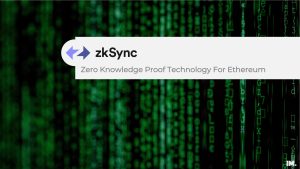The world of decentralized finance has exploded since 2020, leading to the development of numerous blockchain projects that offer users an alternative to traditional financial systems. Two of these projects, Solana and Aptos, have gained a lot of attention from investors and are now at the center stage of the crypto market, competing directly to establish the network as the go-to layer 1 ecosystem for decentralized finance.
About Solana
Solana is a blockchain platform that was built to revolutionize the world of finance by replacing centralized stock exchanges with decentralized technology. This US-based blockchain was founded by Solana Labs, and its ongoing development is managed by the Solana Foundation, a Swiss non-profit.
Solana’s main goal has always been to create a platform that can process up to 120,000 transactions per second, which would make it one of the fastest blockchains in the world. However, according to FTX documentation, Solana’s current TPS is between 2,000-3,000 transactions per second. Nonetheless, Solana’s speed is made possible by its unique proof-of-stake (POS) consensus, which includes a novel component known as proof of history (POH). POH timestamps all transactions, allowing for faster verification and more efficient processing.
Note: my previous update on Solana, written after the FTX collapse
Solana’s Technical Ecosystem
Solana’s smart contracts are coded in the RUST programming language, and it uses its own Solana Virtual Machine for this purpose. The blockchain is currently secured by approximately 2,291 validators, which process all transactions in groups of up to 150 validators called Solana clusters. However, it should be noted that these clusters currently consist of just 30 validators, which is quite centralized.
One potential issue with Solana’s design is that it only has a single validator client. All Solana validators must connect to a single service to interact with the blockchain, which creates a single point of failure. This might have contributed to past security issues and spam transactions on the Solana network.
Another concern with Solana is that its long-term transaction history is stored on Google Big Table, which is a centralized server. If anything were to happen to this long-term transaction history, it could result in huge problems for the network.
SOL Staking Rewards
One of Solana’s most notable features is its staking rewards, which are around 7% per year for validators and delegators. There is no minimum amount of SOL that needs to be staked, but the hardware requirements to run a Solana validator are quite high. Validators essentially need to have a data center separate from all the SOL that are required to be staked.
In addition to its focus on decentralized finance, Solana has also started to focus on NFTs and crypto payments in recent years. With its high-speed blockchain and attractive staking rewards, Solana is certainly worth keeping an eye on in the world of crypto.
SOL Tokenomics
SOL is Solana’s native currency, with an initial supply of 500 million. Of this supply, 37% went to early investors, 25% to the Solana team and foundation, and 38% to a community reserve held by the foundation. One of the most aggressive vesting schedules in the crypto community is associated with SOL, with all of the SOL released as of January 2021. However, this did not affect SOL’s price or circulating supply. The suspicion is that big backers, such as FTX and Alameda, came up with a way to ensure that early investors got their money’s worth without crashing SOL’s price. When the two companies went under, they were holding 15% of the SOL supply.
SOL Token Allocation
The current total supply of SOL is just under 372 million of 550 million, and much of the SOL supply is concentrated in the top wallets. It is not clear which addresses belong to the team or foundation or whether all of the released SOL are allowed to be staked. SOL has no fixed maximum supply, and the inflation is set to decline from the current 8% to just about 1.5% in the coming years, which will be its final inflation rate. Solana burns 50% of all SOL used to pay transaction fees, and with enough adoption, SOL could become deflationary.
Aptos In A Nutshell
Aptos is a relatively new blockchain project founded in late 2021 and launched in October 2022 by former Facebook engineers, Avery Ching and Mohammed (Mo) Shalikh. The project has been branded as the “Solana killer,” leading the crypto community to wonder which blockchain will win the battle.
Aptos has an interesting backstory as it technically began with Facebook’s failed cryptocurrency project, Libra, which was first launched in 2017 and later renamed Diem in 2022. It is likely that most of Aptos was built by Facebook, but the intellectual rights of the network are owned by Aptos Labs, a software company based in the US. The development of Aptos is coordinated by the Aptos Foundation, a non-profit based in the Cayman Islands.
Unlike Solana, Aptos does not have a clear niche or use case. However, the project raised 350 million across two token sales in 2022, with lead investors including FTX and Three Arrows Capital.
APT Technical Ecosystem
Technically, Aptos is a delegated proof-of-stake (POS) blockchain, processing up to 160,000 transactions per second. However, the current transaction per second (TPS) is much lower, ranging from 2,000-5,000. Aptos’s speed is made possible by its novel delegated POS consensus mechanism. The blockchain is currently secured by just over 100 validators.
The hardware requirements for Aptos are also quite high, and the blockchain uses its own virtual machine for smart contracts in the MOVE programming language, based on Rust. Staking rewards for Aptos are not entirely clear, and delegating APT is only possible using a liquid DeFi staking protocol called Tortuga. APT staking rewards are 7% per year with a 30-day lockup. Validators on Aptos are currently safe from slashing.
APT Tokenomics
Aptos’s native coin, APT, is used for various purposes such as paying transaction fees, staking, and governance. At the moment, governance is limited to validators. The tokenomics of APT were made public just before the coin was listed on exchanges.
There is an initial supply of 1 billion APT, out of which 13.5% was allocated to early investors, 35.5% to the Aptos Team and Foundation, and 51% to the community reserve managed by the Aptos Foundation. It’s not clear what the Aptos team and foundation wallets are, but most of the APT in circulation during the first year comes from the community reserve, with a small amount coming from the Aptos foundation and staking rewards. Note that some of the APT from the Aptos community reserve was airdropped to the Aptos community.
APT Token Allocation
APT is subject to a vesting schedule, which peaks at the end of 2026. The entire initial supply of APT will be released over the course of four years. Vesting APT can be staked, and the inflation rate of APT is 7% per year. However, this rate will eventually fall to 3.25% per year, which will take 50 years to reach. Additionally, 100% of the APT used to pay for transaction fees gets burned, which forecasts deflationary mechanics at scale.
Solana & Aptos in Comparison
When evaluating the potential of a cryptocurrency, I take four metrics into account:
- number of users of the most popular wallets,
- number of (active) decentralized applications,
- total value locked (TVL) on decentralized protocols, and
- development activities.
Solana (SOL) | Aptos (APT) | |
|---|---|---|
Wallet Users | Phantom, one of the most popular wallets for Solana, has been downloaded over 2 million times on Chrome alone. | The Martial Wallet, one of the most popular wallets for Aptos, has been downloaded 500,000 times.
The Petra Wallet has been downloaded 300,000 times. |
dApps | The number of monthly active user accounts has been steady at around 300,000 to 500,000. | There is no available data on the number of active wallets using Aptos’ decentralized apps, but there are reportedly around 20,000. |
TVL | The total value locked in Solana’s DeFi protocols has decreased since hitting a high of $255 million in mid-2021. | The total value locked in Aptos’ DeFi protocols is $60 million. |
Developers | Solana has a massive development community, with over 2,000 people working in the ecosystem. | Aptos has a smaller development community, with only 250 developers. |
My Final Thoughts
When considering these metrics, it’s clear that Solana has a larger and more active community, with more significant total value locked in its DeFi protocols. Aptos, on the other hand, has a smaller community, but it has seen steady growth in wallet downloads and TVL.
It’s worth noting that Aptos is still a relatively new project, having only launched its mainnet in October 2022. Therefore, it’s difficult to make any concrete conclusions about its potential at this stage. Nevertheless, its unique delegated PoS consensus mechanism and its high TPS processing capability make it an interesting project to watch.
Newsletter
Stay up-to-date with the latest developments in the stock and crypto market., fund, and crypto market.
Disclosure
These are unqualified opinions, and this newsletter, is meant for informational purposes only. It is not meant to serve as investment advice. Please consult with your investment, tax, or legal advisor, and do your own research.




No comment yet, add your voice below!